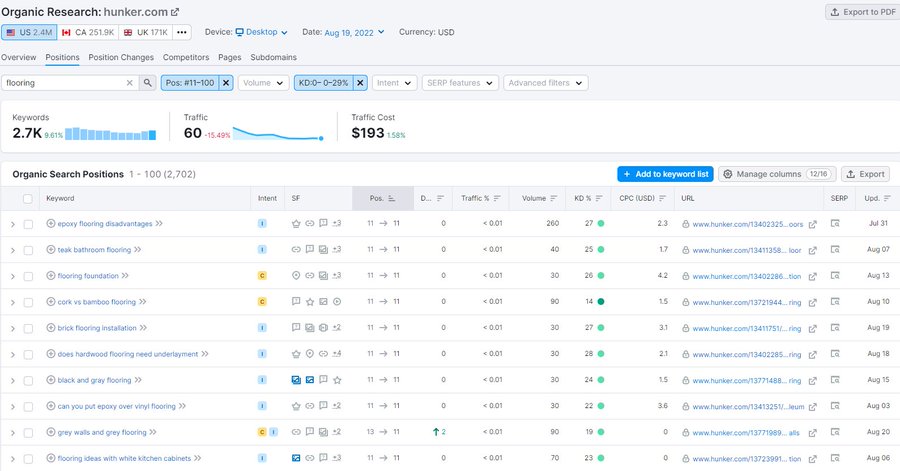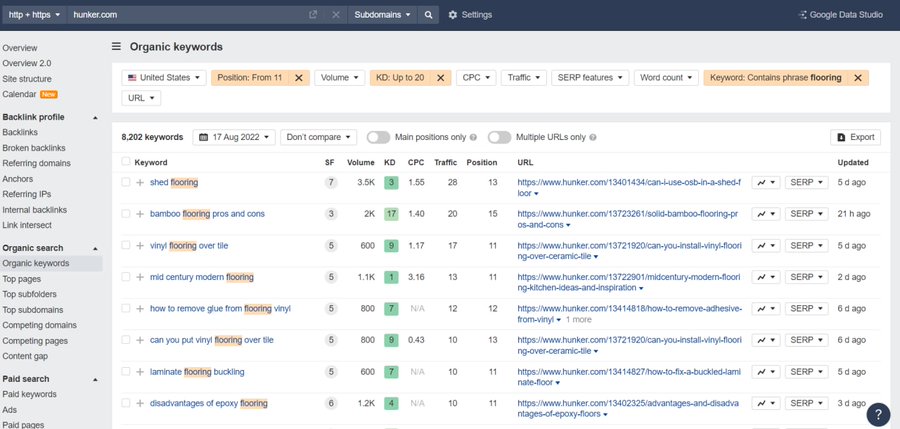This keyword research method helped me to grow my website to 125k monthly visitors without actively building links.
Here is the step by step Process
Step 1:
The most common advice that I see about keyword research is to avoid big fish (high authority competitors) in your niche… and this is a HUGE MISTAKE.
A high authority website will usually rank for millions of keywords.
Step 2:
But did you know that only 10-15% of their keywords rank in the Top 10 in SERPs?
It means the remaining 85-90% of keywords are fair game, and we will be able to discover many low-competition keywords with this huge database.
Step 3:
How to Find Thousands of Low Competition Keywords using @Ahrefs
Add a high authority domain in your niche to a dashboard and set the following filters.
Position: 11-100
KD: 0-20
Step 4:
How to Find Thousands of Low Competition Keywords using @Semrush
Add a high authority domain in your niche to a dashboard and set the following filters.
Position: 11-100
KD: 0-29

Step 5:
So depending on the tool and the keyword difficulty setting we received up to 1.2M of potentially low-competition keywords to work with.
Crazy, right?
Step 6:
Let’s say your website or a cluster on your website is about flooring. We’ll add an additional filter to include all keywords containing ‘flooring’.
Now that you have a few thousands of relevant low-competition keywords, your goal is to find gaps in SERP and feel them with your high-quality content.
Note: Most SEO tools calculate KD (keyword difficulty) based on the strength of incoming backlinks so you shouldn’t blindly trust this metric.
Before you create an article on a particular topic, make sure to manually assess SERP to identify who are your competitors and if you stand a chance to rank on the first page of a targeted SERP.
This tip from https://twitter.com/RusToffee
Related Articles
